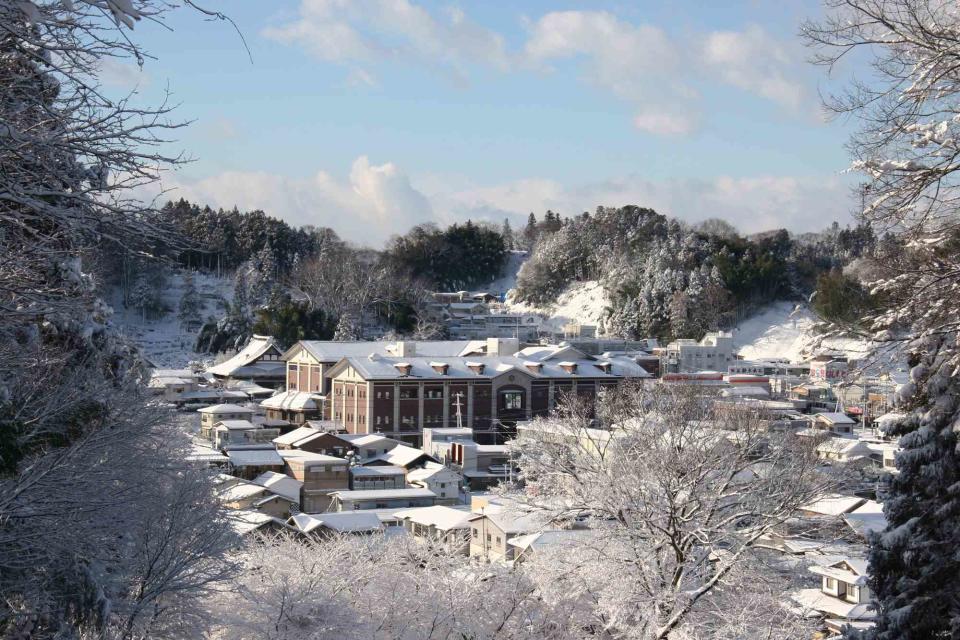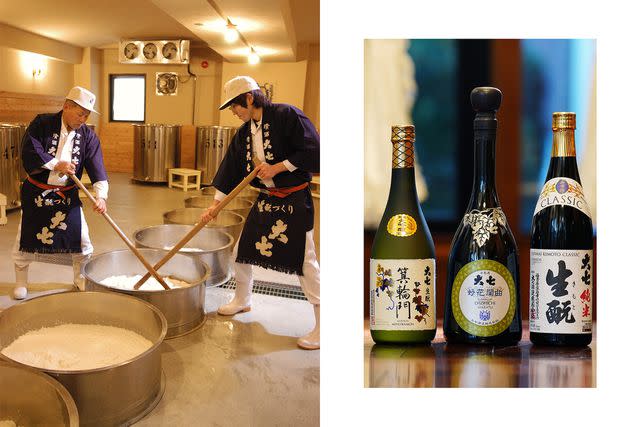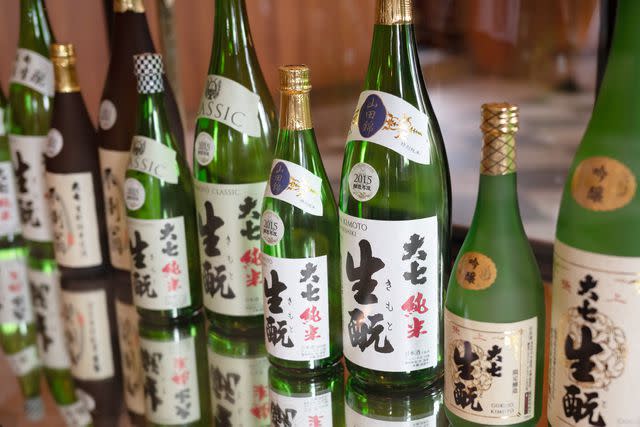Fukushima Is Japan's Capital of Sake — Here Are the Best Breweries to Visit
Since the days of the samurai, Fukushima has been known as Japan’s sake kingdom. Here are the centuries-old breweries to visit.

Courtesy of Daishichi Sake Brewery
Daishichi Sake Brewery.Three hundred years ago, the samurai of Aizu, a mountainous area in Fukushima prefecture, began brewing rice liquor. Since then, the prefecture has been considered the most distinguished sake-producing region of Japan. Its cool climate and water from mountain springs have made it the ideal place to grow rice and koji, the mold cultivated on steamed rice.
After the 2011 earthquake and resulting nuclear disaster brought the world’s attention to Fukushima, the region rebounded — and the sake has long since been pronounced radiation-free. Here’s how to explore the area’s best breweries over a long weekend.
Day 1: Nihonmatsu
From Fukushima City, drive 30 minutes south to Daishichi, which uses the centuries-old kimoto method of mashing the sake starter with long poles, which coaxes out a deep umami. Contrast this with the refreshing and accessible sakes at Okunomatsu, established in 1716, and spend the night at Ryokan New Ougiya, which has its own hot spring that feeds the baths.

Sakes of Daishichi Sake Brewery
Mashing the sake starter at Daishichi, a brewery founded in 1752; sakes of Daishichi Sake BreweryRelated: Here's What's New in Japan for Travelers Planning a Trip in 2023
Day 2: Aizuwakamatsu
Take a scenic hour-long drive west to Aizuwakamatsu, a city built around a castle and surrounded by snowcapped peaks. Tour Tsurunoe Shuzō, which was founded in 1794 and now has a female head brewer. Next, pop in to Suehiro Shuzō, which was the Meiji emperor’s official sake supplier. The brewery pioneered the yamahai method, which allows the starter to undergo spontaneous fermentation, rather than using the kimoto technique. For an adventurous dinner, visit Kagota, an izakaya that serves boiled shark, horse sashimi, and kozuyu, a clear scallop broth with seasonal vegetables. Finish the day at Cuisine Inn Tagoto, a 100-year-old ryokan.

Joey Wong/Courtesy of Fukushima tourism
Daishichi SakeDay 3: Aizubange
Enjoy Cuisine Inn’s breakfast of wappa meshi — a dish of steamed rice, seasonal seafood (often lobster), and vegetables cooked together in a round wooden box. Then head to the town of Aizubange and join the line outside Hiroki Shuzō brewery. If you’re lucky, you’ll score a bottle of artisanal Junmai Namazume, which is brewed with the highest-grade rice and has held a cultlike status since its debut in 1999. From there, it’s only one block to Akebono Shuzō. Though it opened in 1904, the brewery makes experimental beverages geared to younger consumers, including a yogurt sake.
A version of this story first appeared in the February 2024 issue of Travel + Leisure under the headline "A Taste of Tradition."
For more Travel & Leisure news, make sure to sign up for our newsletter!
Read the original article on Travel & Leisure.

